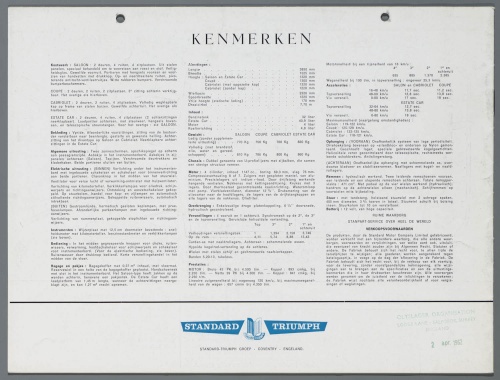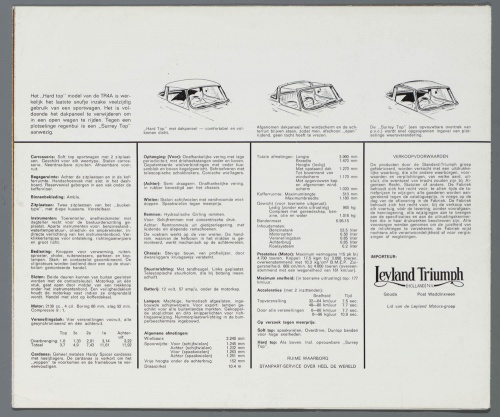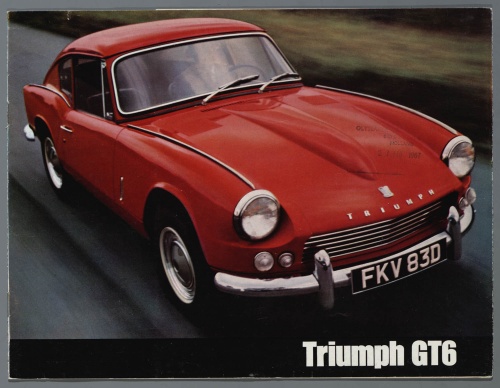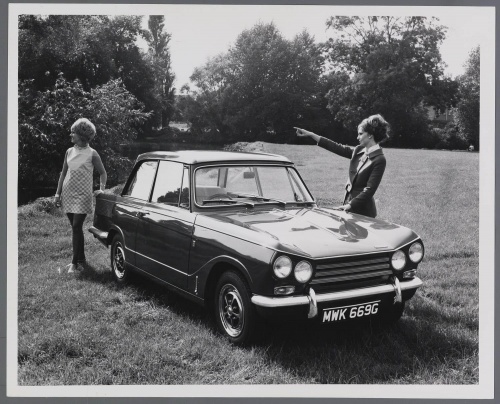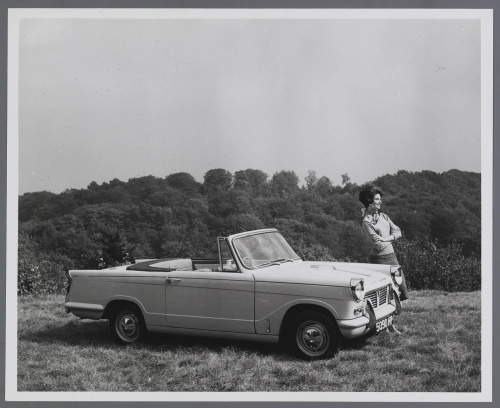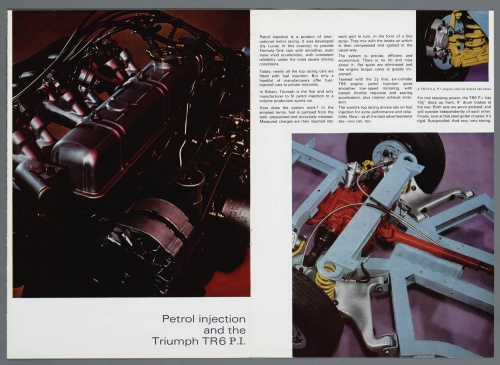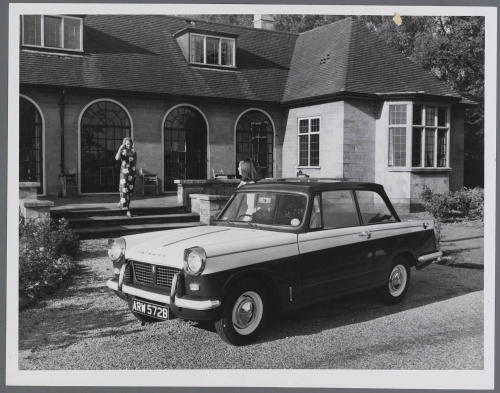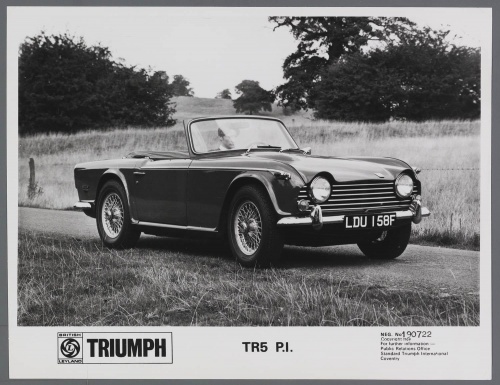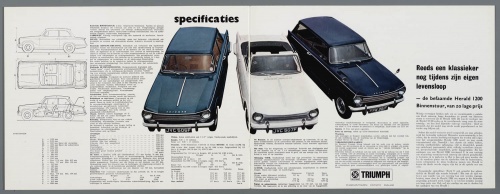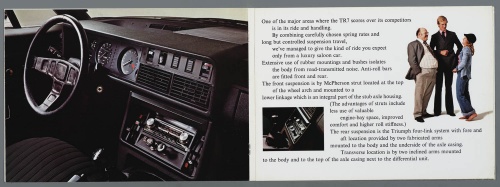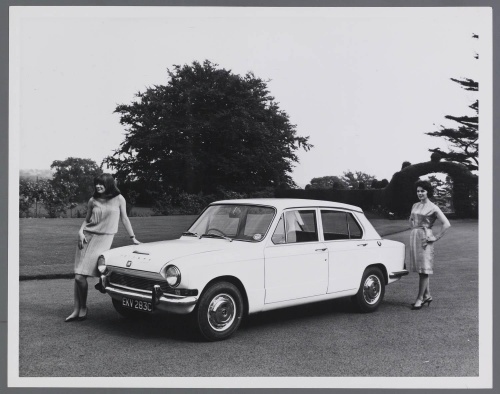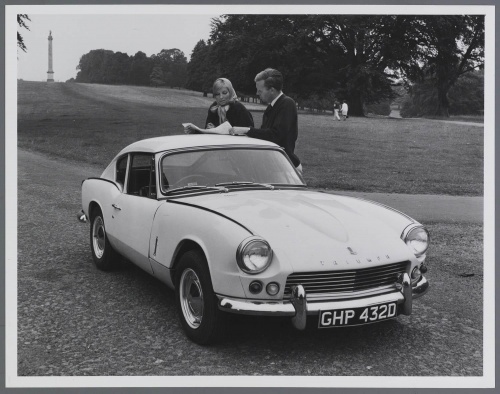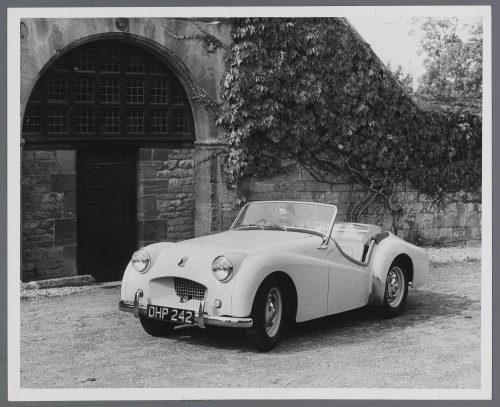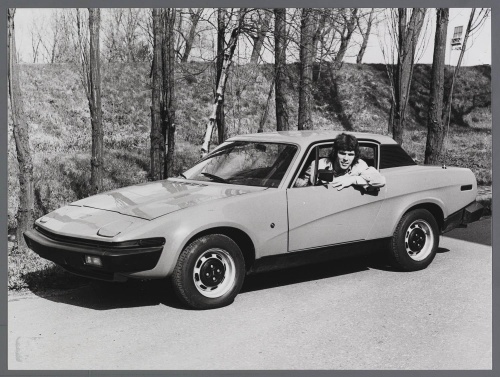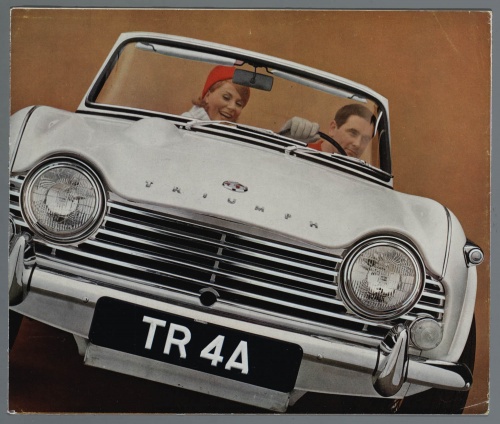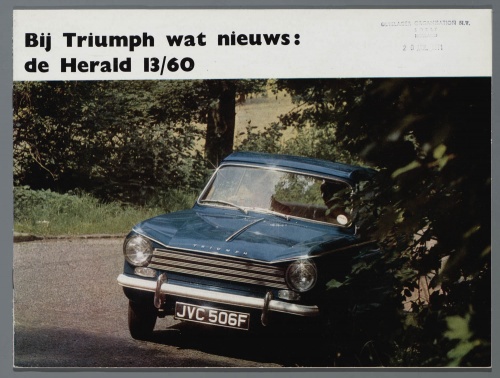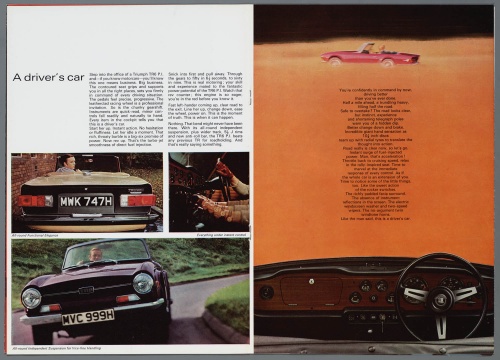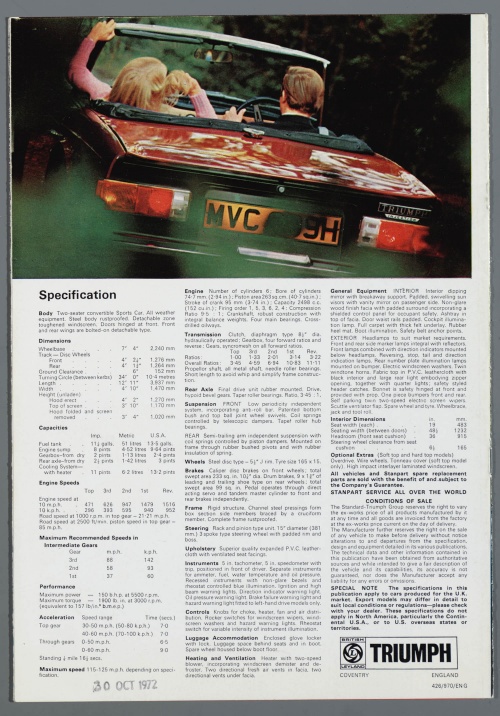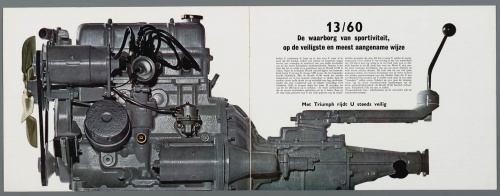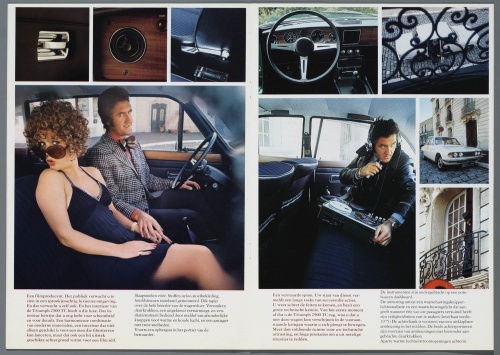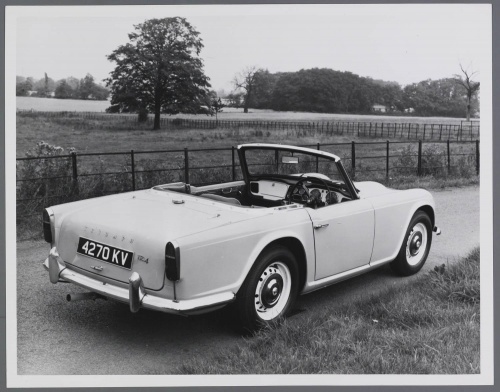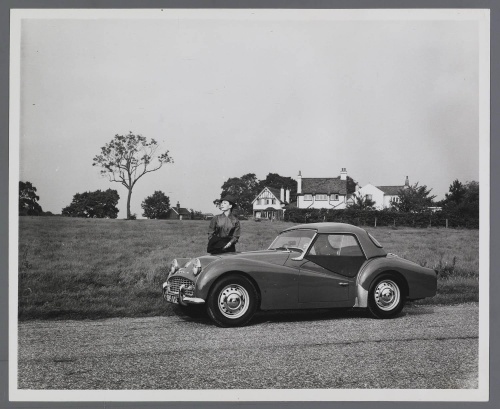TRIUMPH (Coventry, UK, 1923-1984)
The Triumph company, founded in Coventry by the German emigrant Siegfried Bettmann, began in 1901 with the production of motorcycles. Its debut in the automotive field took place only in 1923. Triumph acquired the bankrupt company Dawson.
The first car was the Triumph-10/12NR with an engine displacement of 1393 cm3, which a year later was replaced by the 13/35NR model with an engine of 1873 cm3. It became the first British car equipped with hydraulic brakes from the American company Lockheed. In 1928, the lightweight Super Seven appeared with a 747 cm3 engine. Four years later, they built the Scorpion-12/16НР (Scorpion) with a 6-cylinder engine with a displacement of only 1203 cm3. In 1932, the one-liter Coventry-Climax engine was chosen for the Super Nine model, with the intake valves located in the cylinder head and the exhaust valves located on the side. A year later, its development became the Gloria model, offered in two versions: with 4-cylinder Coventry-Climax engines (1087 or 1232 cm3) and 6-cylinder 1476 cm3.
Triumph sports cars were especially popular. In 1934, two light Southern Cross models with 4-cylinder engines of 1087 and 1232 cm3 were introduced.
In 1934, Donald Healey became the company's chief designer. Under his leadership, the Dolomite 8 car was created, reminiscent of the Italian sports Alfa Romeo, with an 8-cylinder engine with a displacement of 1990 cm3 with two camshafts and a supercharger. In 1936, Triumph began producing its own 4- and 6-cylinder overhead valve engines with overhead camshafts, which gradually replaced the Coventry-Climax engines. As a result, the updated Gloria and Dolomite cars received engines with a displacement from 1496 to 1991 cm3. Large financial investments in new developments brought the company to the brink of bankruptcy in 1939. In 1944, Sir John Black, owner of the Standard company, invited Triumph to join forces, creating the Standard-Triumph group.
The first post-war cars in 1946 were the Triumph 1800 sedan and roadster, equipped with an overhead valve engine with a displacement of 1776 cm3. Since 1949, they were equipped with a new 4-cylinder engine with dry cylinder liners, the displacement of which was increased to 2088 cm3. It was used in the first series of the new sports roadster "TR-2", which became the ancestor of many generations of Triumph sports cars. Subsequently, a new 2-liter engine was used on the TR-2. The basic version of the model and its modifications with a volume of up to 2498 cm3 were used on the series of light sports cars "TR-3", "TR-3A", "TR-4", "TR-4A", "TR-5" and "TR-6" ".
In 1955, the Renown sedan rolled off the assembly line, replacing the 1800 series. It was followed by the light car "Herald" with an engine displacement of 948 cm3. On its basis, in 1962, a sports Vitesse was built with a 6-cylinder 1.6-liter engine. At the same time, a two-seat sports Spitfire was created on the Herald chassis, which in 1967, in turn, became the basis for the GT-6 model with a 6-cylinder engine with a displacement of 1998 cm3.
In 1961, the Standard-Triumph group merged with Leyland Motors, and in 1967 with Rover, which led to a temporary improvement in the financial position of all members of the new concern. In 1963, the 2000 sedan was released, and in 1965, the front-wheel drive Triumph 1300. In 1968, another restructuring of the British automotive industry took place, when almost all major English companies merged into the British Leyland concern. After that, in 1968-1970, Triumph released several new products: a small car "Toledo" with a 1.3 liter engine, a middle-class sedan "Triumph-2.5PI" with a fuel injection system and a sports "Stag" (Stag) with a V8 engine with a displacement of 2997 cm3, produced for 7 years. In 1972-1973, Dolomite and Dolomite Sprint came off the assembly line with high-power engines with a displacement of 1854 and 1998 cm3. In 1976, the main new product was the sports model "TR-7", which since 1979 was also offered with a convertible body.
In the difficult 70s, the unification of cars of all members of the British Leyland concern began. The sedans of the 2000 and 2500 series that appeared at that time resembled similar products from Rover, and in the late 70s Triumph began production of the Rover 3500 with a V8 engine. In 1981, the production of “branded” sports cars “TR-7” and “TR-8” ceased. In the end, the Triumph brand was retained only by the Acclaim model, an English version of the Ballade model of the Japanese company Honda with a sedan body. It was manufactured until 1984.
